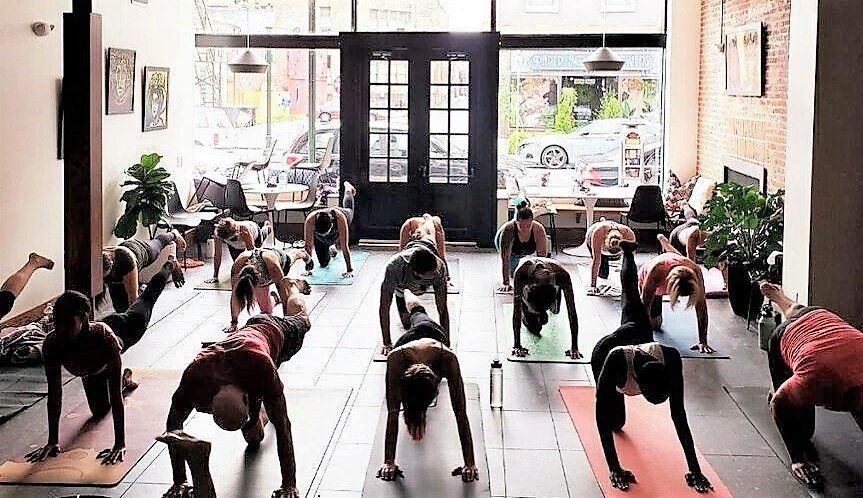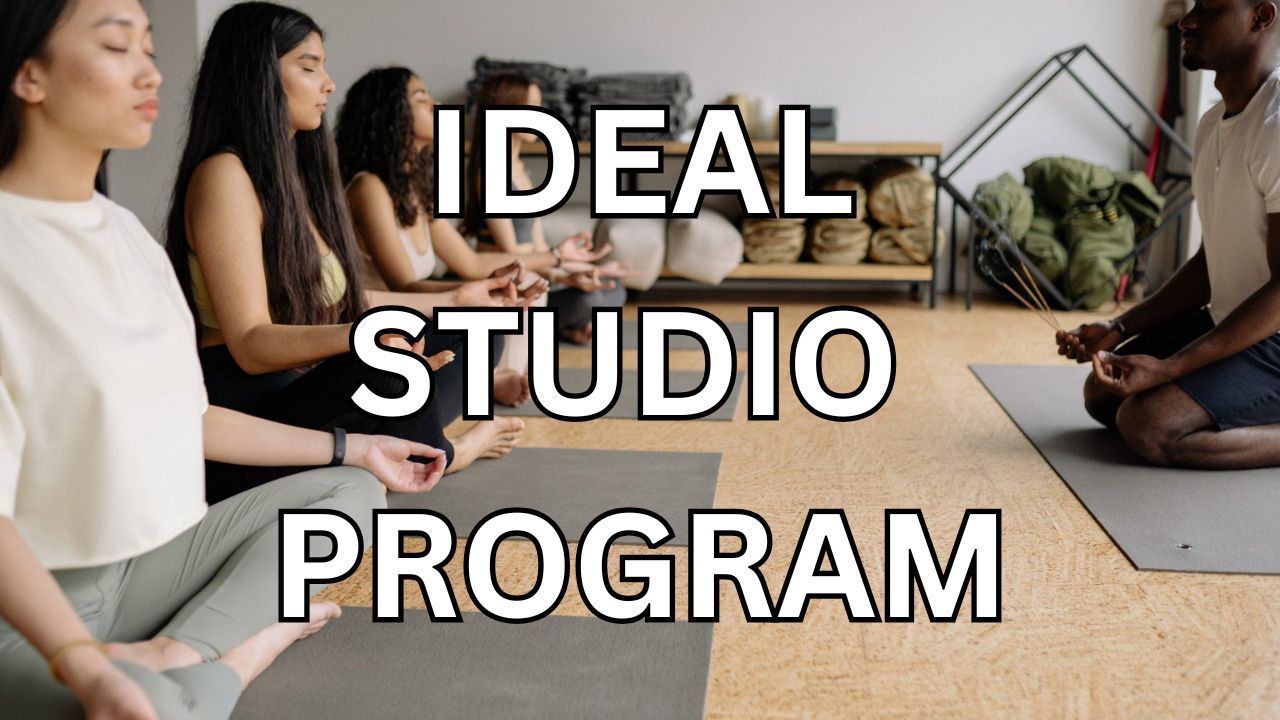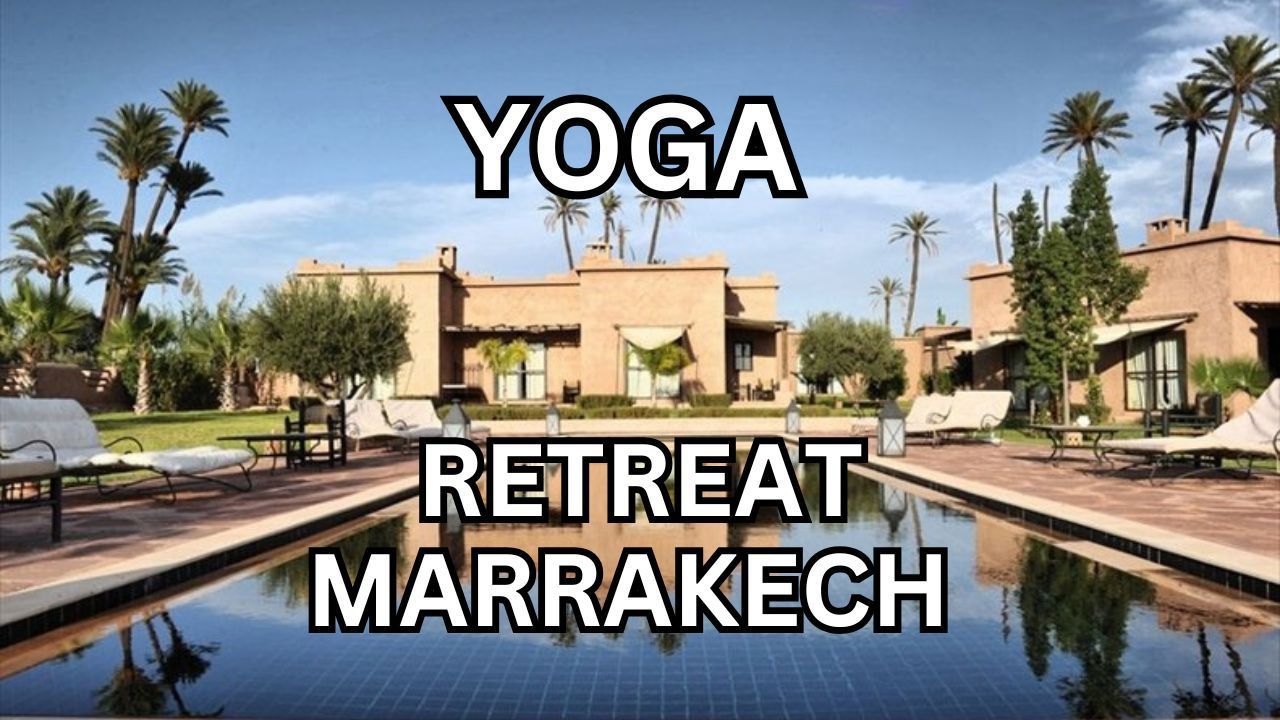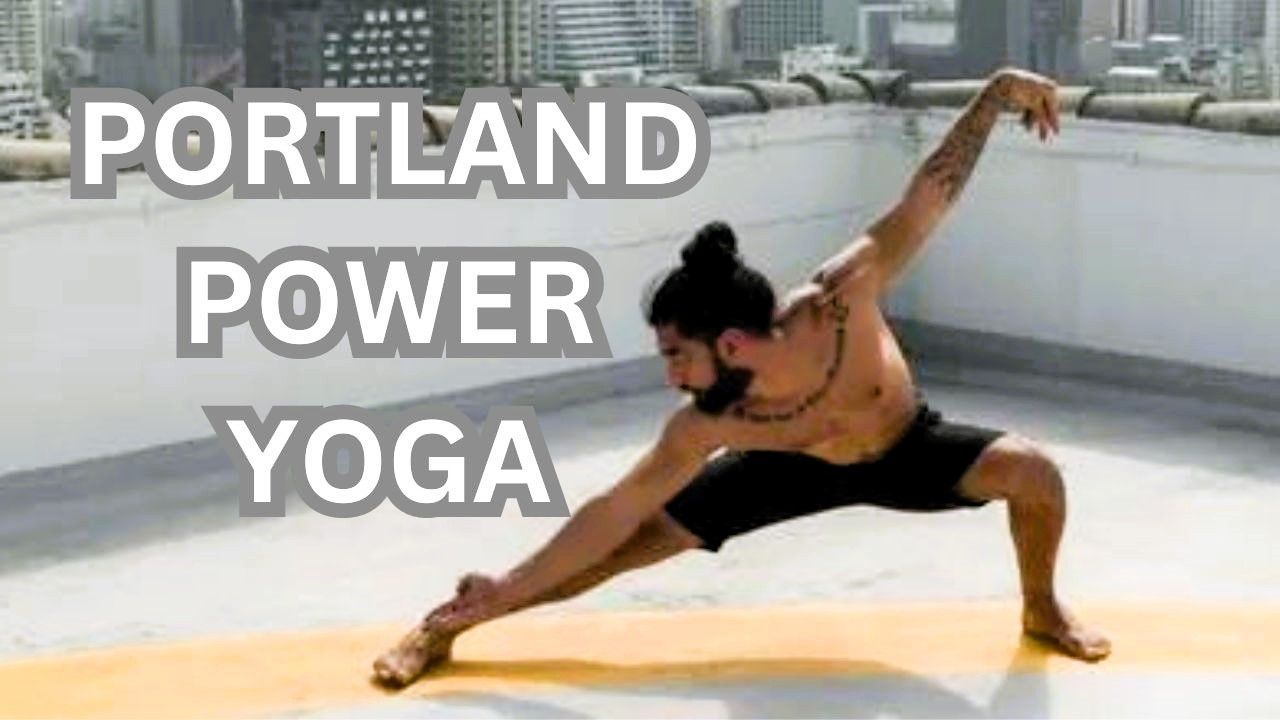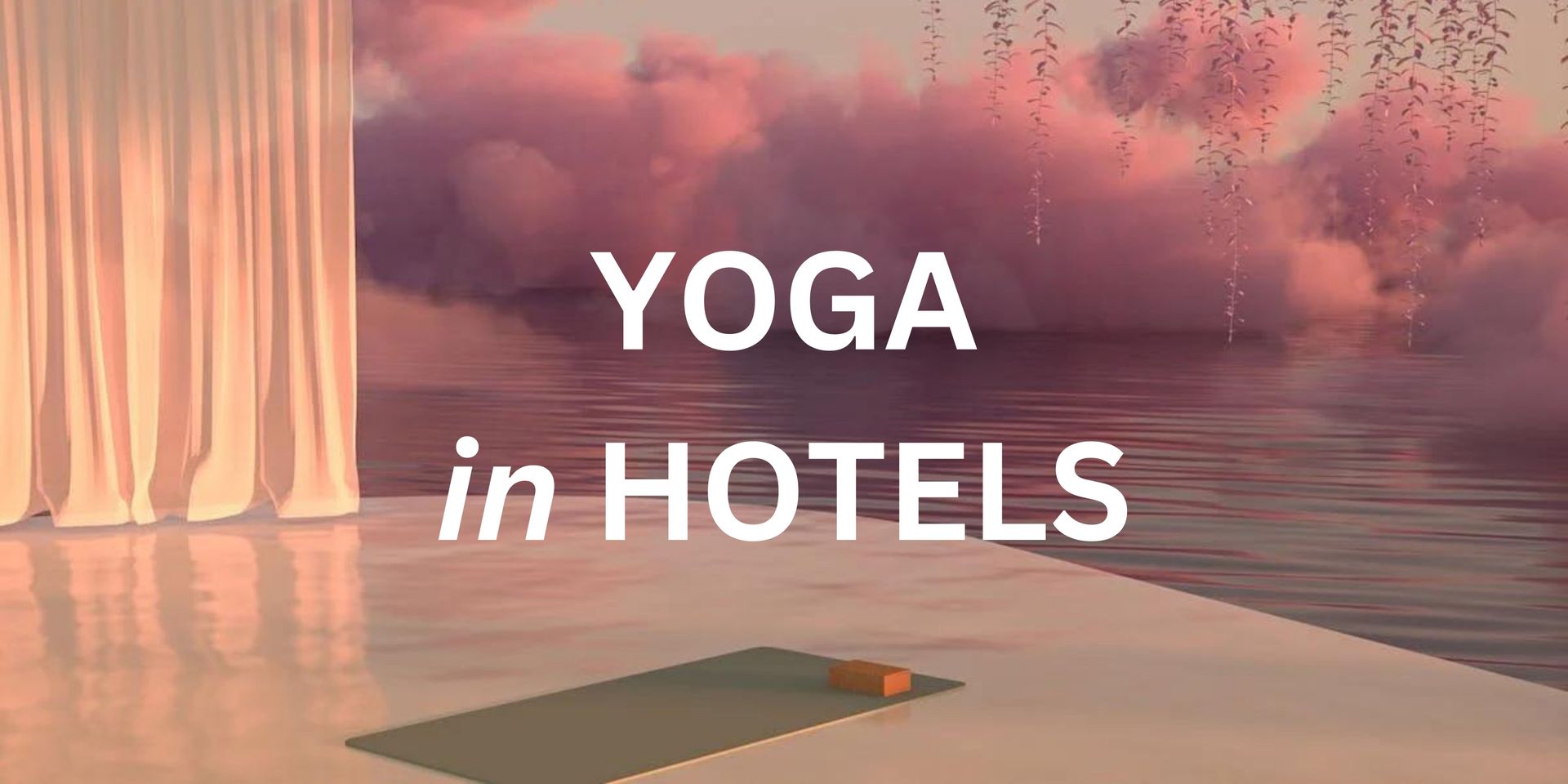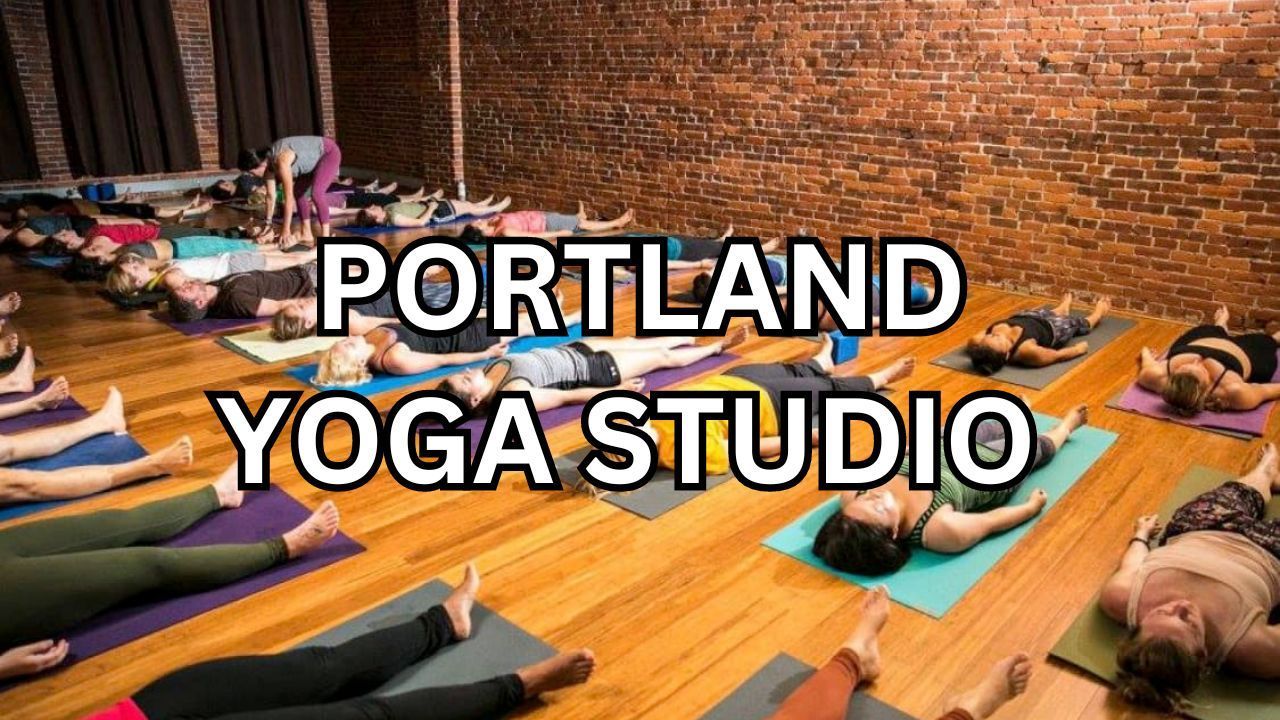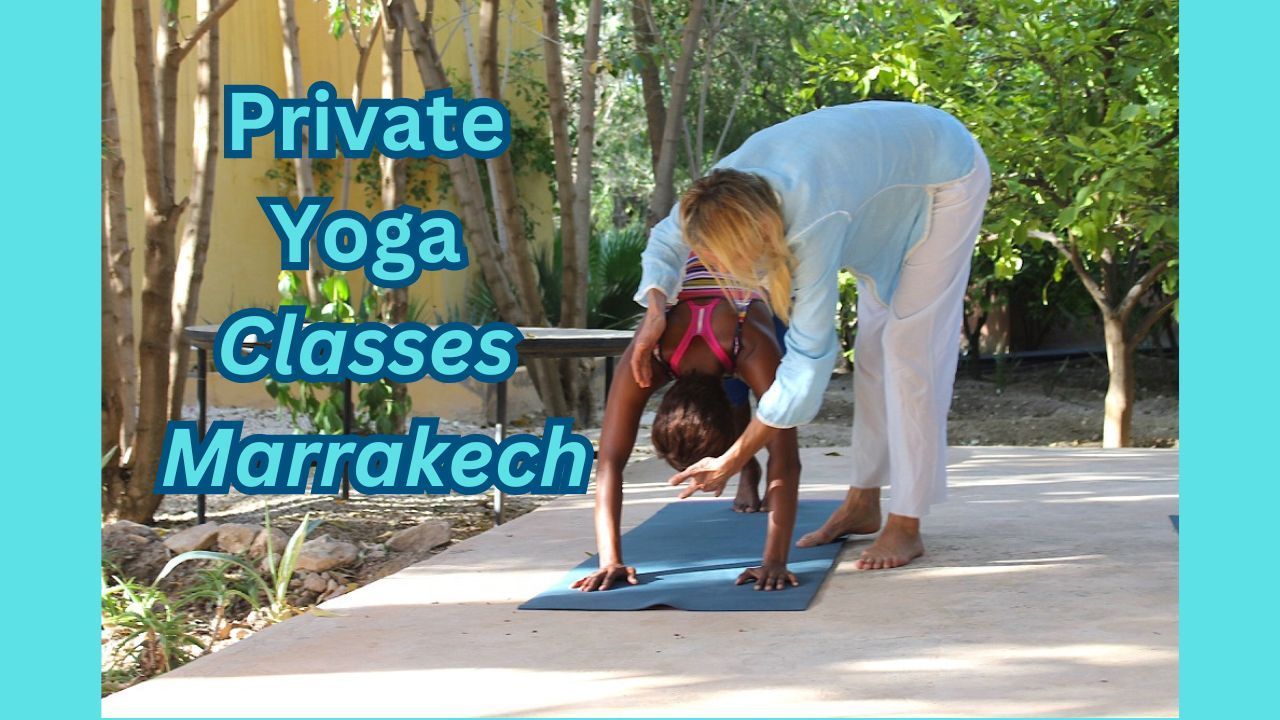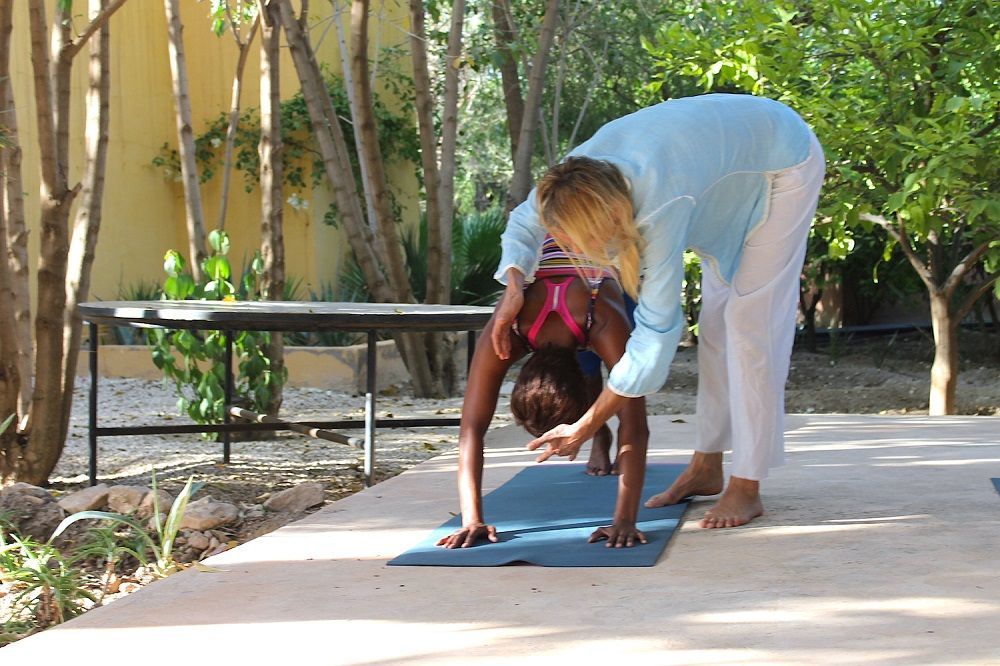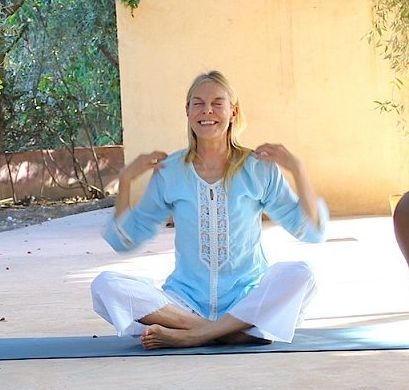It was 2006 in the heart of Milan, Italy at a bar called Leopardi 13, that I first taught yoga in a Bar setting. The idea came from Andre, the bar manager, who approached me with a simple proposal: “Can you teach yoga here on Monday nights? It’s our slowest night.” He wanted people just to walk in more on that night.
I agreed—and what followed was something unexpected. We set the mood with a neutral, Ibiza-style mellow electronic music flowing through both the yoga space and the non yoga space. Upstairs, patrons of the non yoga area sipped drinks in a laid-back atmosphere, while downstairs, a group moved through yoga postures in sync with the beat. Our music selection provided the ambiance that fit both bar and yoga. Tara, a local Indian restaurant, catered with non-alcoholic aperitifs, and Milano Yoga Shop donated mats with branded business cards.
It wasn’t just a yoga class. It was an urban wellness reset. People came to detox from the weekend, connect socially in a low-pressure environment, and still get home early. Held between seven and eight in the evening—right before traditional Italian dinner hours—the timing and tone aligned perfectly with local culture. The community formed quickly, and the Monday night bar yoga group became a regular feature.
That experience stayed with me. It showed me that yoga didn’t have to be boxed into studios or silent halls. It could coexist with music, community, and even nightlife—without losing its essence.
Bar Yoga in the United States: A Quietly Growing Trend
While the idea of bar yoga might seem novel, it’s been quietly gaining ground in the United States for over a decade. In cities like Austin, Portland, Denver, and Chicago, yoga classes in breweries, taprooms, and bars have emerged as a way to bridge wellness with social engagement. Some focus on a casual “yoga then beer” model, where participants enjoy a drink after class, while others use the bar’s ambiance as part of the vibe—music, lighting, and even barstools becoming props in the session.
The trend began rising in the early 2010s, aligning with a broader shift toward community-centric wellness experiences. Events like “Brewery Yoga,” “Yoga & Mimosas,” and “Pints & Poses” became regular features in wellness calendars across craft beer cities. These sessions often stripped away the formality of the studio, offering no-barrier access to yoga: drop in, mats provided, come as you are.
In the U.S., these events are usually scheduled during off-peak hours: weekday evenings around 6 or 7 p.m., or weekend mornings from 10 a.m. to noon. Evening sessions attract the after-work crowd seeking a light social outlet before dinner or drinks, while mornings often pair with brunch and juice menus.
A defining feature of these experiences is the invitation to choose. After class, attendees often pick between a craft beer, a kombucha, a mocktail, or a fresh juice. The goal isn’t to replace bars with studios—it’s to create a new kind of setting where healthy doesn’t mean isolated, and social doesn’t mean indulgent.
Notable Examples in the U.S.
- Yoga + Beer Oregon started 2013
Drop-In $23
Includes practice and a beverage. - Hopworks Urban Brewery (HUB) Yoga & Brews Events locations both in Portland and Vancouver
- Bendy Brewski Yoga in Charleston, South Carolina: Yoga in breweries, with post-class local craft beer.
- YogaBuzz in St. Louis: A nonprofit offering yoga in rooftop bars, event venues, and breweries.
- Yoga on Tap series: Found in various cities, blending wellness with local beer culture.
Unlike most yoga studios Portland offers, these events create a setting where you can step onto a mat and still be part of a larger social rhythm.
Pros:
- Accessibility: Draws in people who might never step into a yoga studio.
- Community: Encourages post-class connection.
- Atmosphere: Music, lighting, and a laid-back setting make yoga feel less intimidating.
- Flexibility: Options for alcoholic and non-alcoholic drinks make the experience welcoming for all.
Cons:
- Noise and distractions: Bars aren't soundproof studios. Background noise is part of the experience.
- Limited space: Some venues can't comfortably fit more than a small group.
- Perception: Purists feel it dilutes the discipline of yoga.
- Inconsistency: Classes may be irregular or subject to venue priorities.
Conclusion: A Proposal for the Future
The success of my Milan experience and the growing trend across U.S. cities prove one thing: yoga doesn’t need rigid boundaries to maintain its value. It can live in places where people gather, laugh, drink, and connect—so long as it offers a clear option for wellness and inclusivity.
Bar yoga works best when the setting honors choice. When kombucha and craft beer are side by side. When a yoga mat rests on the same floor that hosts laughter at night. When health and connection exist without conflict.
Because healthy doesn’t have to mean isolated. And social doesn’t have to mean indulgent.
TEAM BUILDING
A weekly Yoga with Perumal class offers far more than physical wellness—it’s a powerful tool for
team building and emotional resilience, especially for bar and restaurant staff working in high-energy social environments. These classes help staff strengthen posture, reduce physical strain, and maintain emotional balance—key traits for those constantly engaging with guests, navigating unpredictable social dynamics, and working long hours on their feet. Yoga nurtures the Zen/Yogic mind, an unconscious state of calm clarity that enhances communication, presence, and creative problem-solving. In this way, a regular yoga session doesn’t just build flexibility—it builds a better team. Staff return to their shift feeling
stronger, more presentable, and more grounded, improving both individual performance and group cohesion behind the bar or on the restaurant floor.
Whether teaching in Milan or leading a
Morocco yoga retreat, I’ve seen how yoga adapts to its environment without losing its core. These lessons carry over to how we view space, time, and intention—whether you’re in a brewery in
Portland Power Yoga territory or on a rooftop terrace at a
Yoga Retreat Morocco. Because healthy doesn’t have to mean isolated. And social doesn’t have to mean indulgent.









